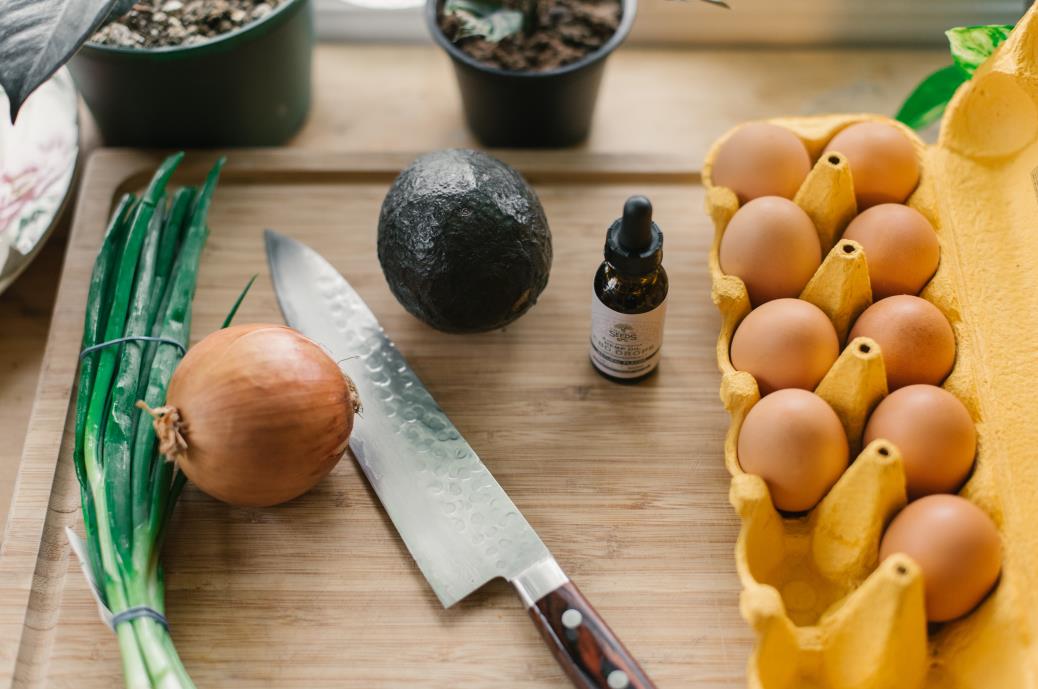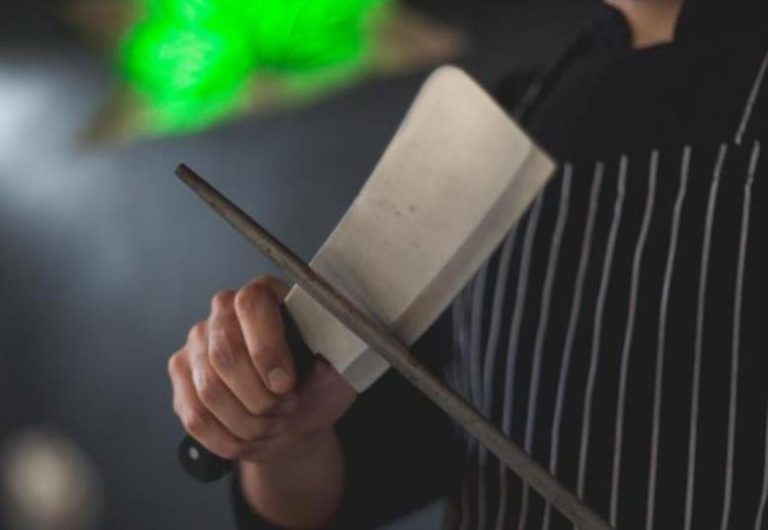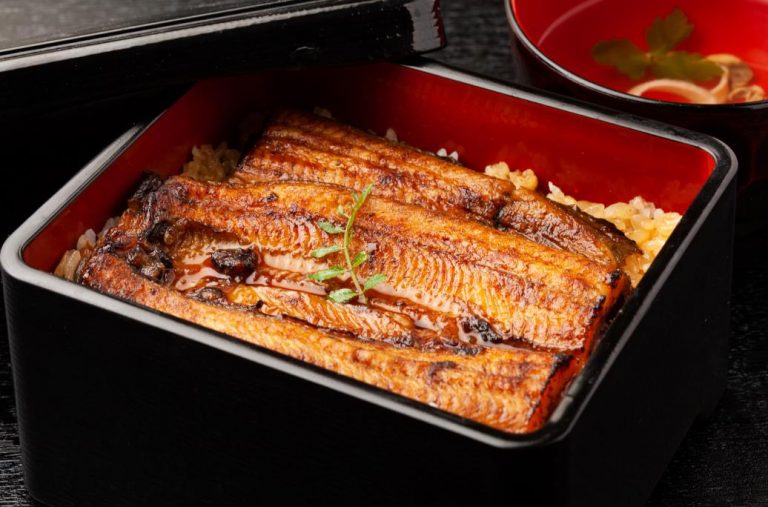Dabbling between Gyuto and the western chef’s knife? It’s common for most shoppers and store owners to get lost between the two. Despite having a similar look, both have differences that can be vital for the outcome the cook anticipates.
Gyuto is the Japanese version of a western chef’s knife that historically started off as a meat cutting knife. It looks almost identical to a chef’s knife with minor differences. The distinction is in the cutting style and how a Japanese-made Gyuto cuts through ingredients.
The Japanese way of forging blades gives Gyuto distinct features, hard to come by in western-made blades. On the other hand, a western chef’s knife is the most popular kitchen cutlery. It’s usually the only knife a professional chef or home cook picks up and uses throughout meal preparation.
This comparison article will give an overview of the Japanese Gyuto and the western chef’s knife, compare the two, and come to a conclusion to find out which is better for knife stores.
What is the Japanese Gyuto?
Gyuto is an all-rounder Japanese kitchen knife, providing its user versatility across many cutting needs. Here is its history, design, and uses in culinary arts.
Origins
Gyuto emerged in the late 19th century when the Japanese began to accept and eat red meat. Japanese cooks didn’t have a specialized blade for cutting slabs of meat like they did for fish and vegetables. They adopted the western chef’s knife to cover this shortage and soon redesigned it to create the ultimate meat butchering tool, Gyuto.
Once a meat butchering knife quickly turned into an all-purpose, highly adaptable kitchen knife. Today, Gyuto is a prized kitchen knife displayed in stores, particularly popular in those that appeal to professionals.
Gyuto knife design
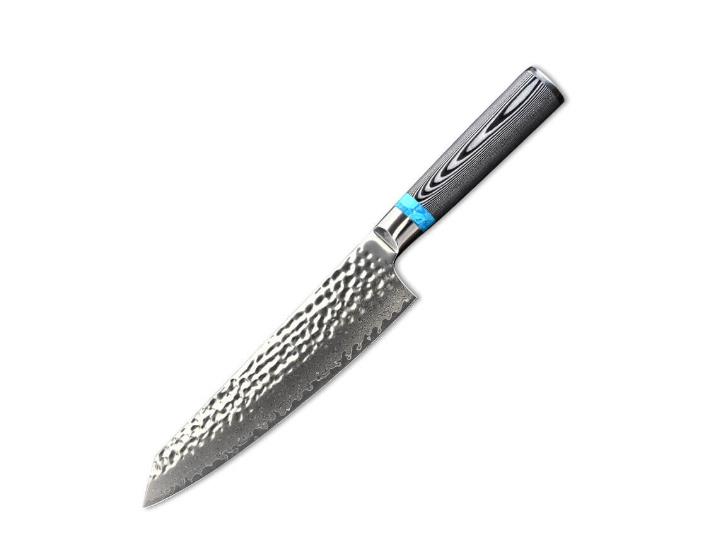
A chef’s knife and Gyuto’s design are similar. The most noticeable difference is the edge profile. The traditional Gyuto has a relatively flat edge that doesn’t curve as much as a chef’s knife.
Instead of the edge towards the tip having a curve, as seen in German chef’s knives, Gyuto’s spine joins the end of the blade. This creates a pointy end, just like the chef’s knife.
Another difference is rather than the edge maintaining its flatness, it curves slightly at a similar angle to the spine. This little curve has enough bend, enabling the cook to rock chop.
Gyuto comes in multiple sizes, from 7 to 14 inches. Professional chefs prefer the lengthier blades, and an 8 to 10-inch Gyuto is the ideal size for most home cooks.
Buy Wholesale Knives and Start Scaling up with Us Today
Contact us and connect with a sales rep to get a free quote.
Gyuto uses in culinary
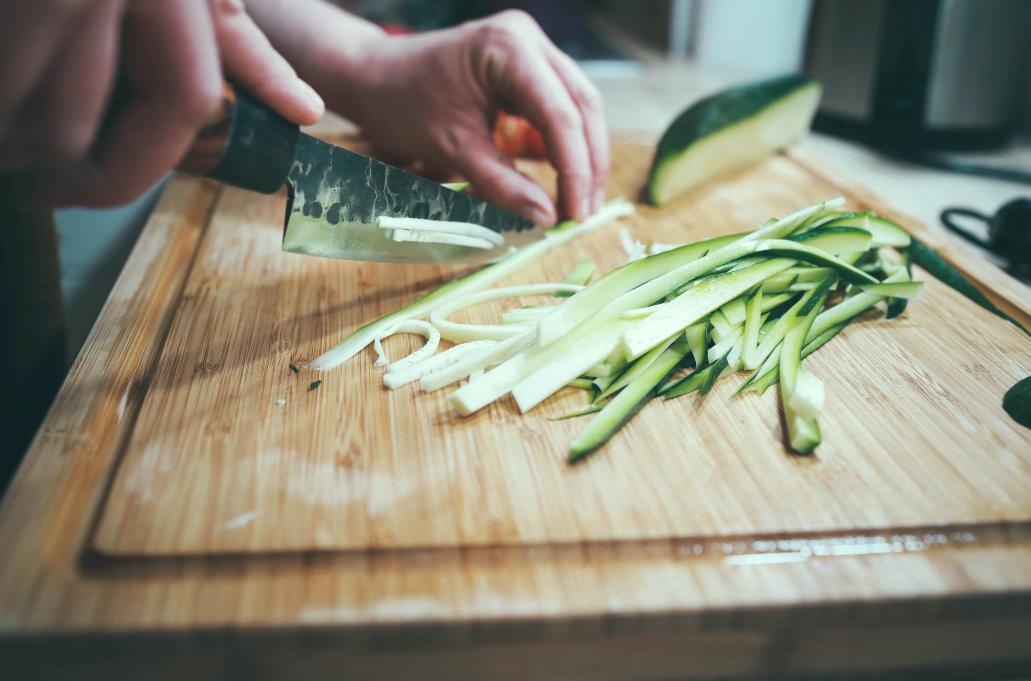
Any food that’s not dense, such as vegetables, fruits, and boneless meat, is perfect for Gyuto to cut. While these might sound like only a handful, it covers many ingredients used for most dishes.
This brings us to Gyuto’s ability to chop, dice, mince, and slice ingredients. It’s efficient in ensuring the cuts are smooth, thanks to its sharp edge. The acute grinding angle of Japanese kitchen knives is not only for single bevel knives. Gyuto is also sharpened at 10 to 15 degrees, giving it a razor-sharp edge.
However, this makes the knife more fragile. This is the main reason why cooks should stay away from cutting anything dense, like frozen goods.
A kitchen knife initially developed for cutting meat, Gyuto comes as no surprise to break down large cuts, trim fat, and slice steaks. The only use a cook might find missing in Gyuto is cutting bones, but disjointing and breaking down whole poultry is not a problem.
Overall, Gyuto is the ideal kitchen knife for making delicate slices, general chopping and mincing of vegetables, and detailed work like cleaning up a cut of meat to make steaks.
Gyuto vs. Santoku
Gyuto isn’t the only popular Japanese knife that found a place in European and North American kitchens. Santoku is an ideal kitchen knife for cooks that look for something simple to process ingredients.
Although Gyuto offers more uses, Santoku can be a better alternative for cooks looking for a knife to care for their basic needs. We’ve already made a comparison article for Gyuto and Santoku, which you can read here.
What is a chef knife?
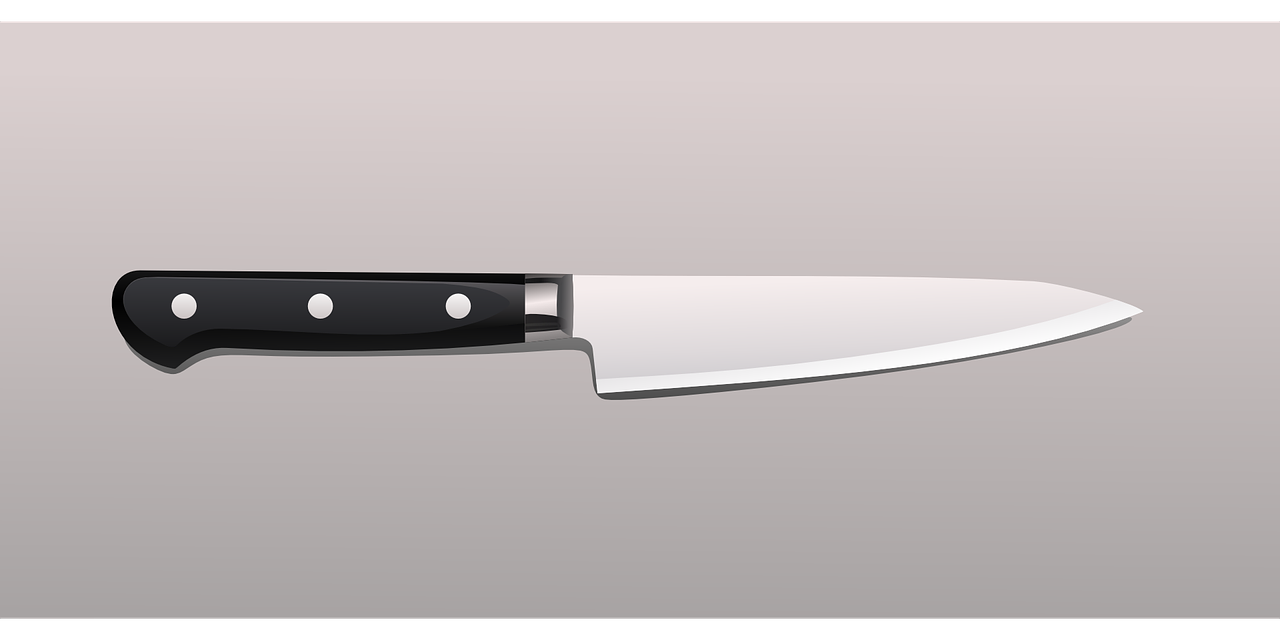
Perhaps the most common kitchen cutlery of all, the chef’s knife is widely accepted as the most universal blade to prepare dishes.
Origins
The chef’s knife as we have it in our kitchens today was created by Peter Henckels, the founder of the now-famous knife brand Zwilling J. A. Henckels, in 1731. Over time, it grew in size, but the main design elements of the all-purpose kitchen knife western chefs utilize today are the same.
Knife design
The western chef’s knife has a relatively wide blade profile at the heel that tapers down to a sharp point. This gradual but continuous tapering follows up with a generous curve. The curve is more apparent towards the end of the blade.
This blade design gets in the way of a chef’s knife from making full contact with the cutting board. The geometry of the blade is why chefs utilize this knife more by rocking the knife over the ingredients. This way of cutting requires more pressure on the edge, which the chef’s knife takes without a flinch.
For several reasons, a chef’s knife is more durable than a typical Japanese kitchen knife. Knifemakers ground the edge between 20 and 25 degrees, making it thicker and sturdier. The blade is also scarcely thicker at the heel and slimmer towards the tip. These make a chef’s knife a sturdy all-purpose kitchen knife that can readily cut down any ingredient.
The western chef’s knives are available in many size options. Like Gyuto, professional chefs favor a lengthier blade at 12 to 14 inches, whereas home cooks prefer a much smaller one at 8 to 10 inches.
Buy Wholesale Knives and Start Scaling up with Us Today
Contact us and connect with a sales rep to get a free quote.
Side note: A chef’s knife’s design is different in other countries. The western chef’s knife originated in Germany and France. The Chinese chef’s knife, for example, has a cleaver-like design. Another example is the chef’s knives of the Middle East with their overly curved edge and a wide blade, making mincing meats and other foods easy to grind down.
The design of a chef’s knife is a matter of preference and what’s practical, depending on the culinary arts of that region.
Uses in culinary
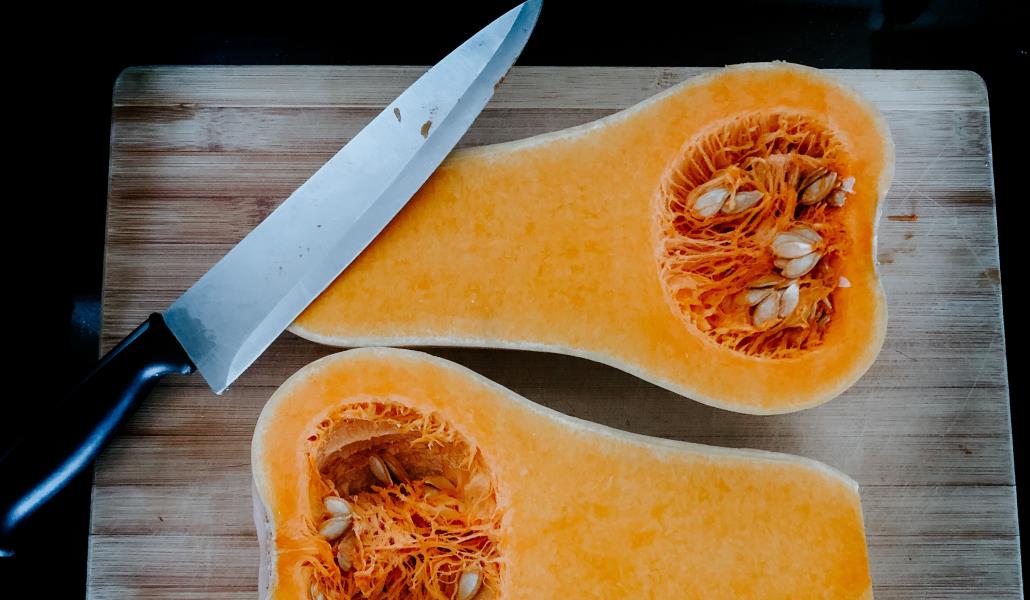
A chef’s knife helps the cook prepare ingredients from start to finish. The chef’s knife can deliver all the cuts a cook needs – chopping foods, breaking small bones, mincing herbs, anything else imaginable.
The pointy tip helps with precision work, like julienning, removing connective tissue, and separating meat from the bones. The curved edge helps mince ingredients fast, while the sturdy heel allows the chef to cut hard ingredients, like tough meat cuts, melon peels, and nuts.
However, these aren’t to say that a chef’s knife is perfect for everything. A specialized blade designed for a purpose is always more efficient. For example, a bread knife slices baked goods better than a chef’s knife, or a cleaver cuts through bones without a worry in mind.
A chef’s knife can also tackle these tasks but won’t be as accurate and may require more supervision from the user. Knowing that the highly adaptable nature of a chef’s knife also comes with constraints is vital to set proper customer expectations.
Gyuto vs. chef knife
Settling on either one is just as hard for knife shops with various customers with diverse preferences and likings for a kitchen knife. Here are the differences your customers will find between Gyuto and the western chef’s knife, covering everything from design to uses.
Blade
As mentioned, Gyuto has a flatter edge. It still has that curve at the tip, but not as angled as a chef’s knife.
This design element of Gyuto is where a knife enthusiast can differentiate the two. Another design that sets them apart is the thickness. However, this isn’t special to Gyuto. Almost all Japanese kitchen knives have a slim blade profile that easily glides through ingredients.
The blade thickness of both knives is similar at the spine, but Gyuto tapers down to a significantly thin blade overall. The thin blade, added with the lightweight nature of high carbon steel, makes Gyuto an overall lighter kitchen knife.
This difference is clearer about 5 to 10mm above the edge, where Gyuto is about 50 percent thinner. Besides these, Gyuto and the chef’s knife look similar, except for Gyuto’s triangular tip and slightly flat edge.
Cutting style
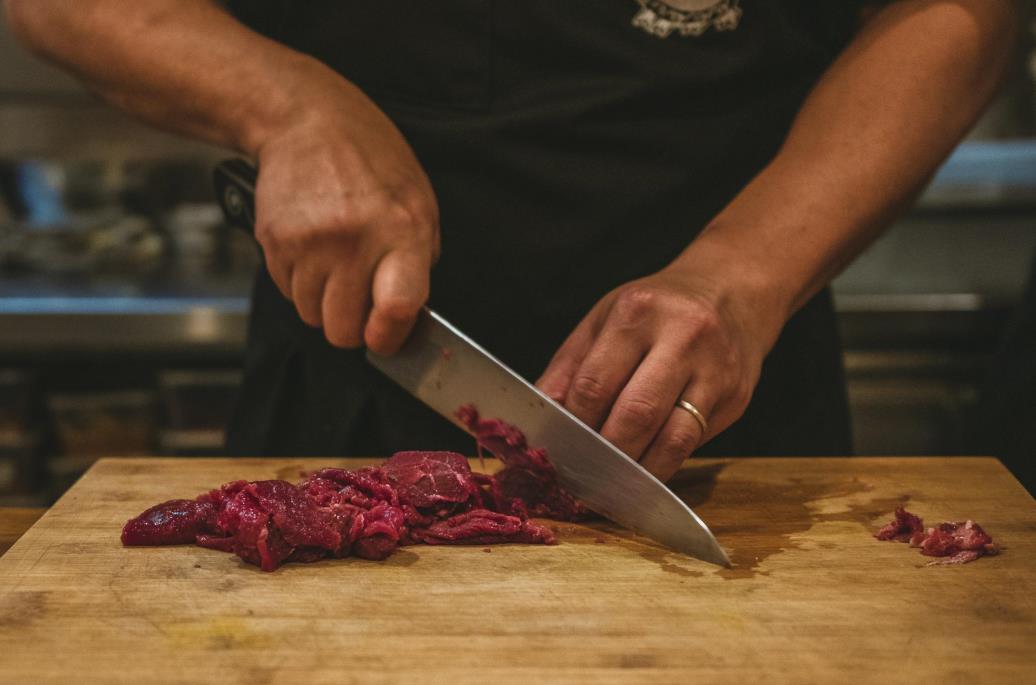
The typical chef’s knife is best at rock chopping, where the cook rests the tip on the board and moves the rest of the blade up and down.
Gyuto can also manage this to a certain degree, but it’s a more fitting knife for pull and push cuts. Instead of moving the blade in a downward motion, the cook pulling the knife toward themselves or pushing it away as it cuts leads to the optimal results with Gyuto.
This difference in cutting style is primarily due to Gyuto’s slimmer profile and acute grinding angle.
Price
Most chef’s knives are stamped out of a large steel sheet, heat-treated, ground, and fitted with a handle. This is a straightforward method to manufacture chef’s knives because the type of steel used enables this.
Some chef’s knives are forged by hand, but these are hard to come by and generally more expensive. On the market, cooks can find a chef’s knife for as little as $20 or get a good-quality blade for about $70.
Gyuto, on the other hand, is usually more expensive. Most Gyuto and other Japanese kitchen knives are forged by hand with the hands of an artisan with generations of experience. Japanese kitchen knives are also typically made from premium-grade steel, like VG-10, SG2, and Shirogami and Aogami.
All of these add up to the price of owning a Gyuto. A decent-quality Gyuto can cost the cooks upwards of $100, with an expected retail price of around $120 to $150.
Handle
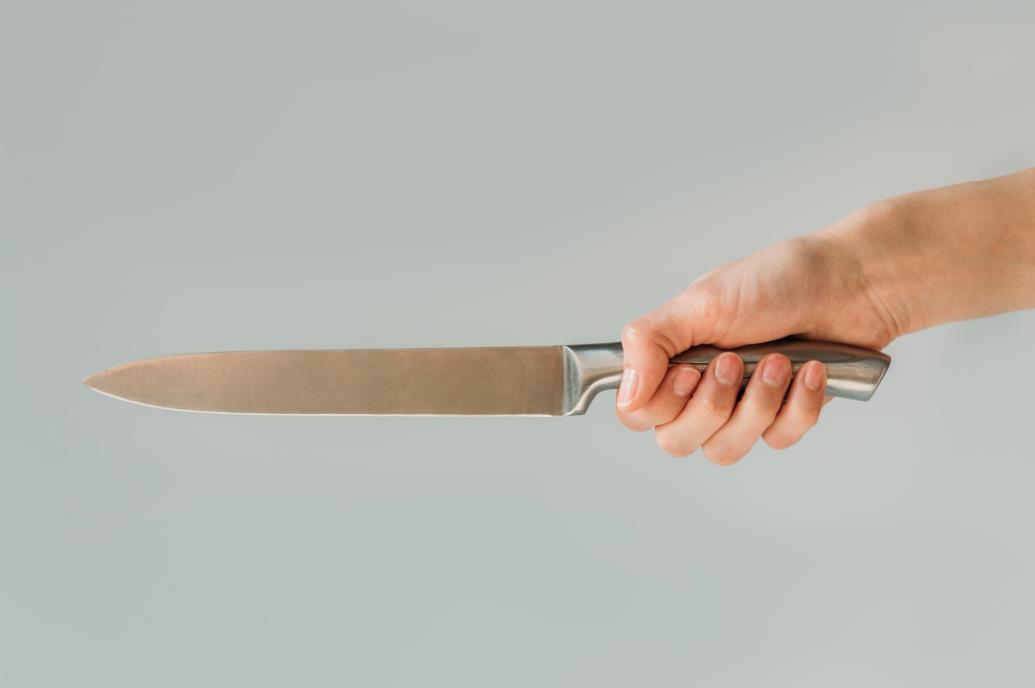
Gyuto has the standard wa-handle, the traditional Japanese knife handle. Since this, and some other Japanese kitchen knives, like Santoku and Kiritsuke, are popular outside of Japan, they also come with the western handle.
Wa-Gyuto is the knife furnished with the Japanese handle, and Yo-Gyuto is with the western handle.
The chef’s knife comes with the handle most cooks are familiar with and may feature a hook facing downwards at the butt. The Japanese handles are almost always made from natural materials, like wood and bamboo. The western handles are also made from these materials, in addition to plastic and composite.
Similarities
The overall design and uses are what these two knives have in common. When a beginner cook or someone growing an interest picks up the two, they might not see any difference.
While the similarities are obvious, the small yet critical details make them two different kitchen knives. Here is a comparison table summarizing the differences between Gyuto and the chef’s knife.
| Gyuto | Chef’s Knife | |
| Blade Length | 6 to 12 inches | 6 to 12 inches |
| Cutting Style | Push cut and rock chop | Mostly rock chop |
| Steel | Hard steel | Soft steel |
| Retail Price | $70 to $100 | $120 to $200 |
| Handle Type | Japanese wa-handle | Western handle |
| Smaller Version | Petty knife | Utility knife |
Which knife is a better choice for your knife store?
Both kitchen knives are all-purpose that can benefit your customers greatly.
Although we’d recommend having both, not every seller has the luxury to make that investment. This also applies to the cooks – Gyuto for general cutting work and the chef’s knife for dense ingredients that might be too much for the Japanese alternative.
Go with Gyuto if your customers aren’t beginners and wouldn’t mind cutting with a bit of care. Gyuto may also have a strict maintenance requirement, depending on the steel used for forging the blade.
Upkeeping is an ongoing task with carbon steel. Learn more about the care requirements for carbon steel knives.
Go with the chef’s knife if your customers are beginner chefs and home cooks. The sturdier blade is generally forgiving to incorrect use, where it won’t chip easily like Gyuto.
Because the western chef’s knives are often made from stainless steel, they won’t easily rust. Leaving the knife unclean for five minutes or so won’t bring further challenges, which is easier on beginners and convenient for home cooks.
Ready to start off? Whether it’s Gyuto or chef’s knife, we get you covered. Check out our catalog of kitchen knife samples, and get in touch to request a quote now.
